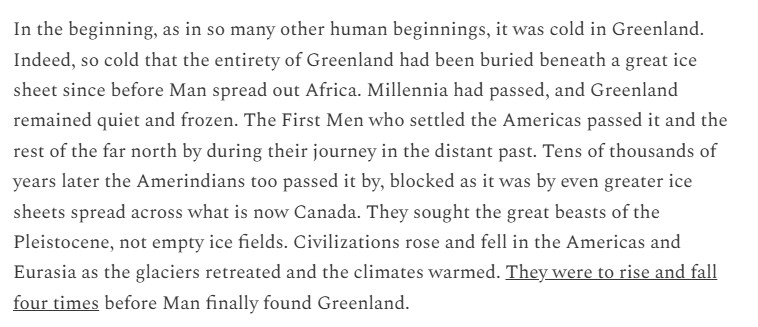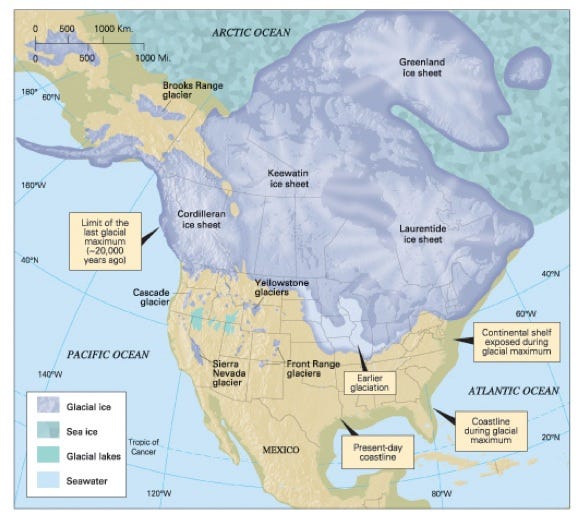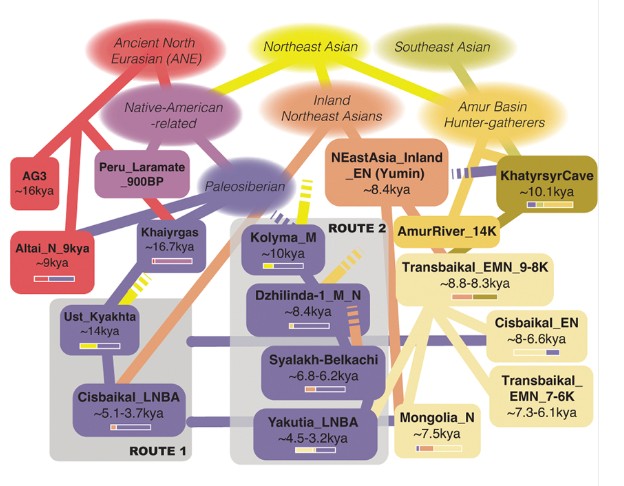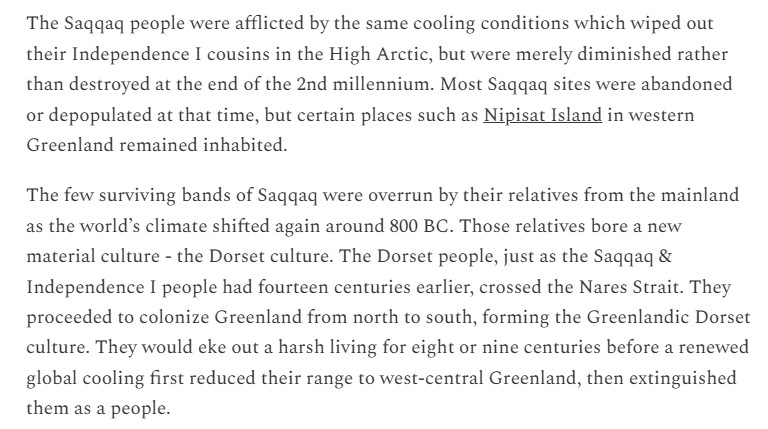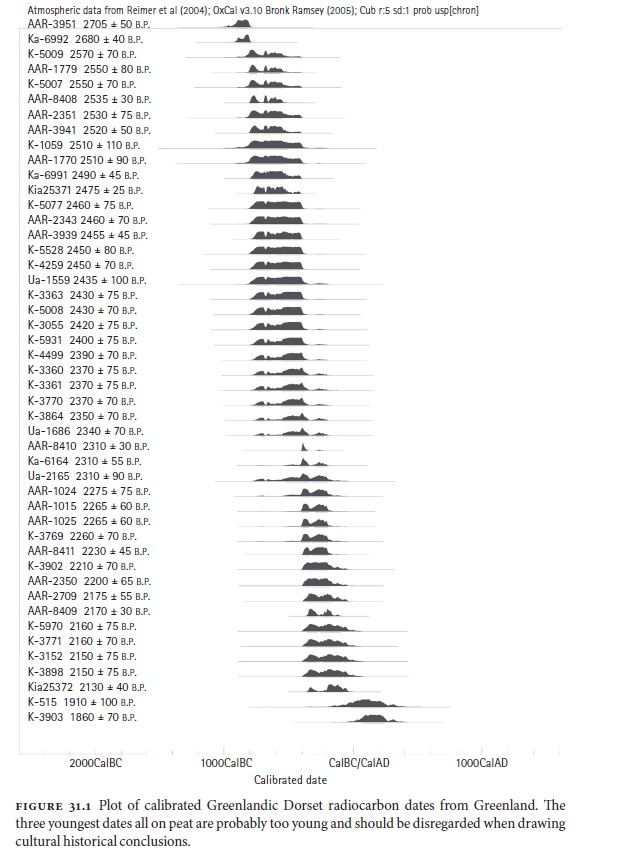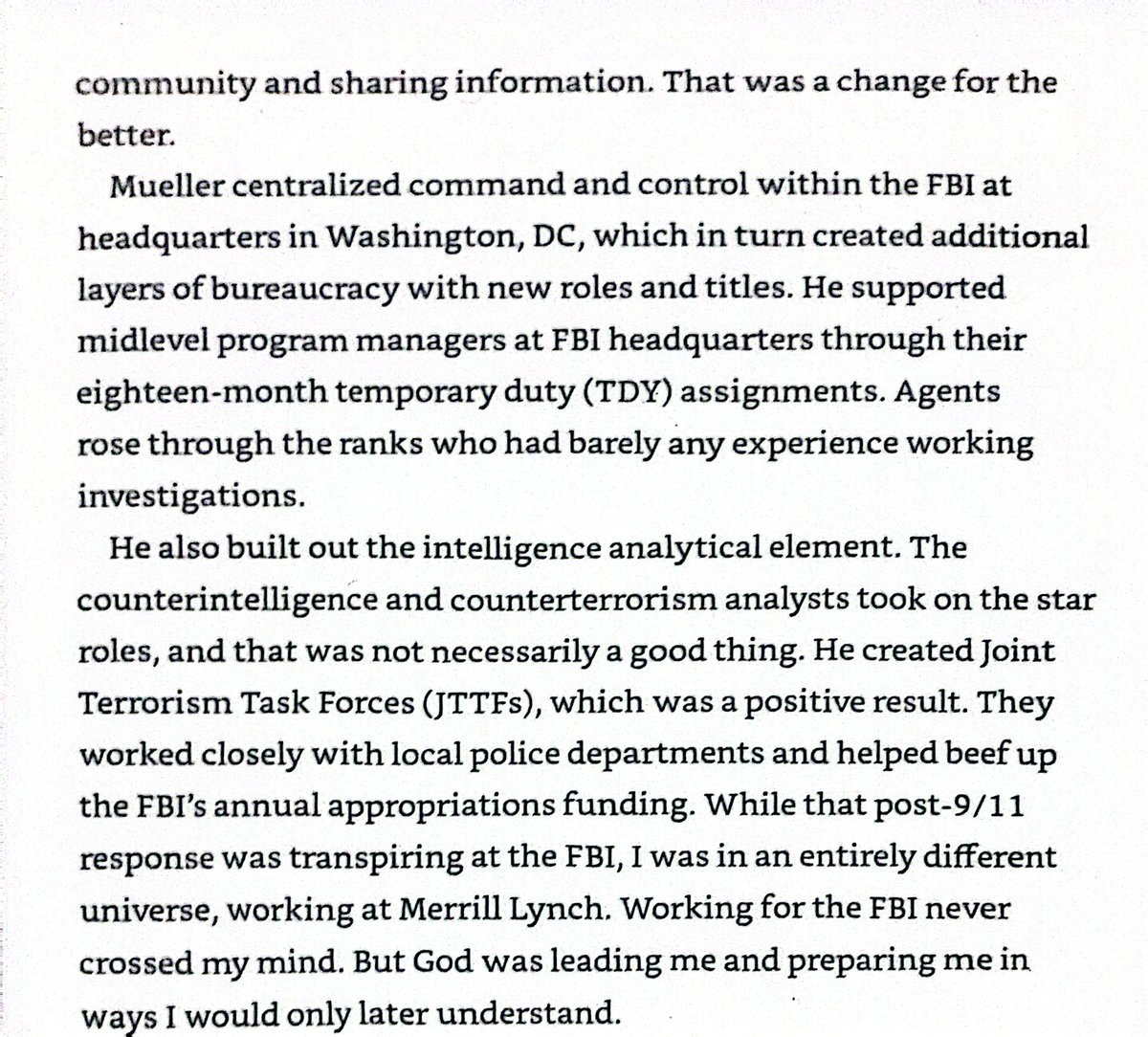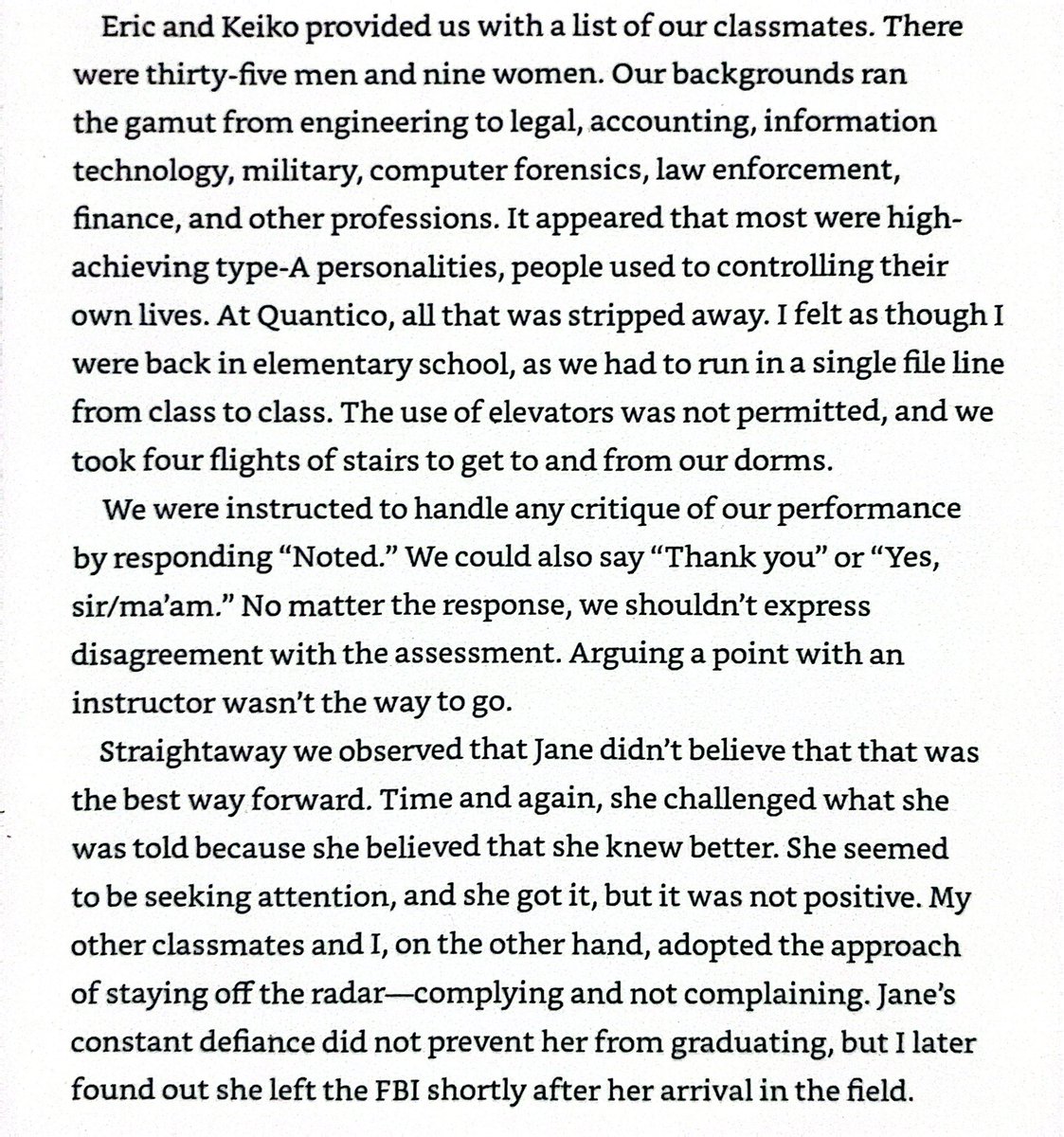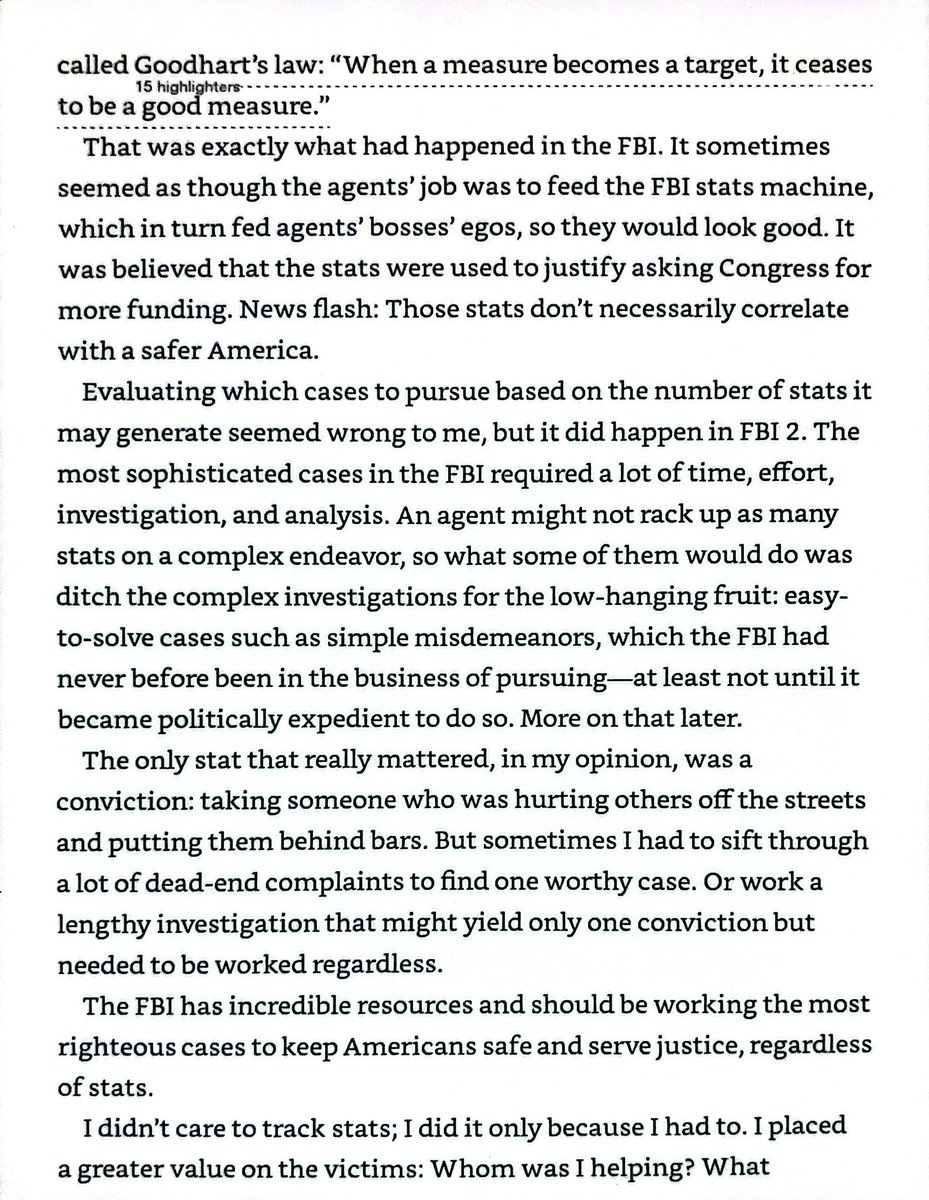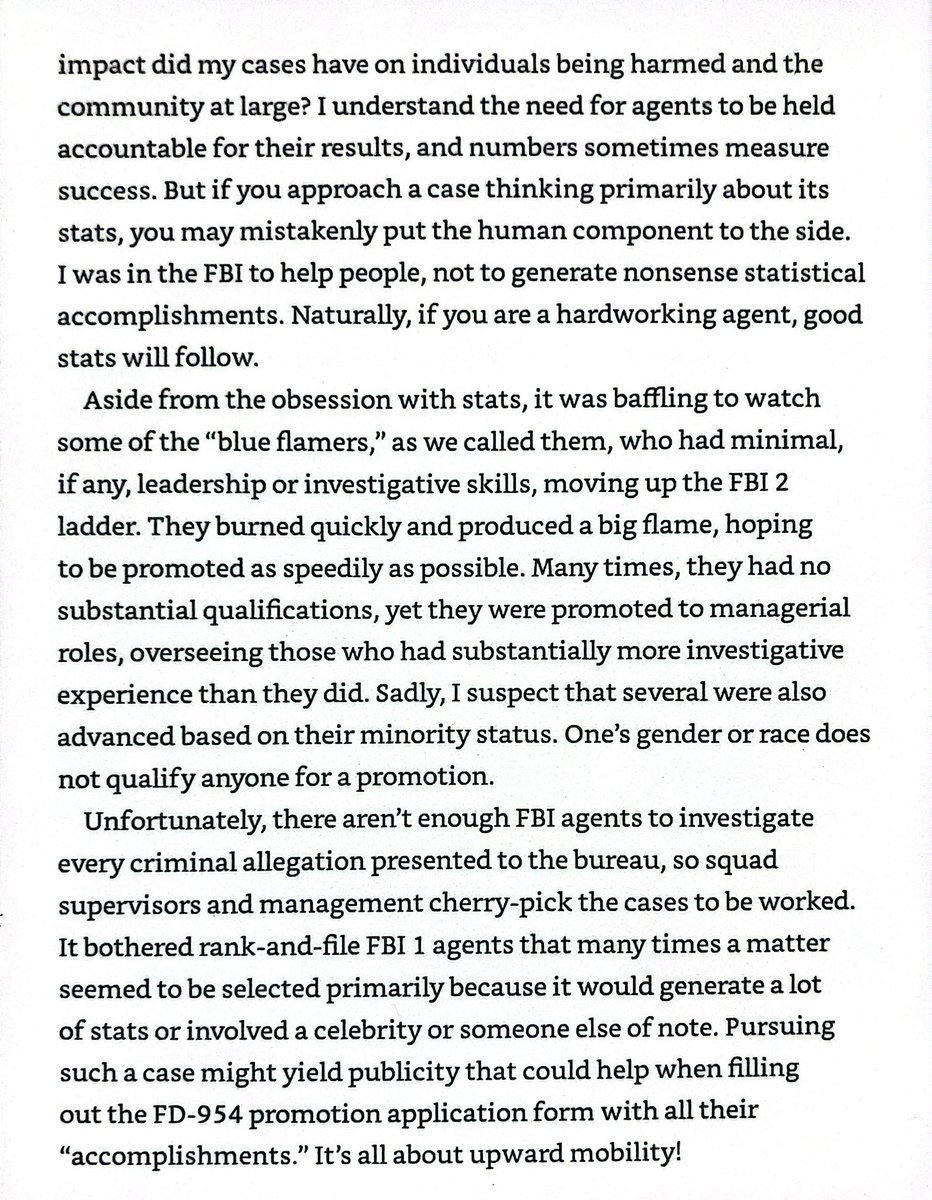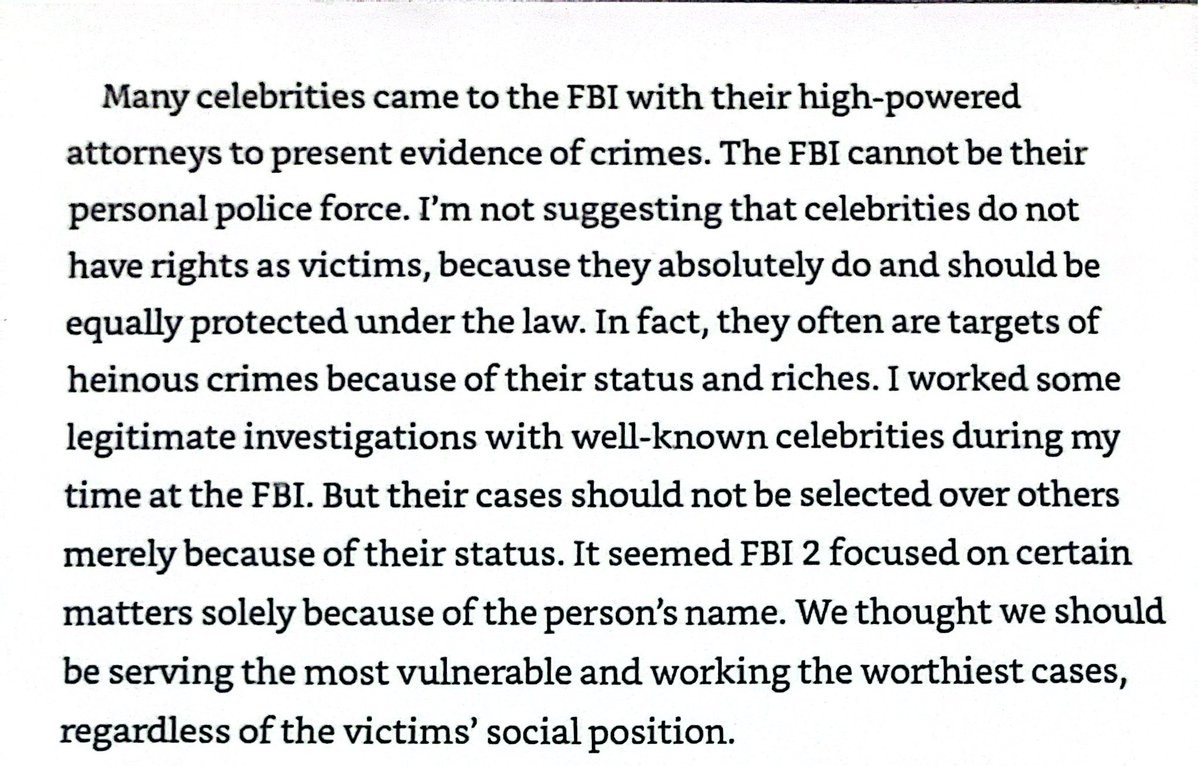Thread with excerpts from "Tribes and Politics in Yemen: A History of the Houthi Conflict" by @BrandtMarieke 

Sheikhs in north Yemen are elected from eligible men from the sheikh's family. Their authority is largely a product of their role as mediators & arbiters between the clans. They rely heavily on local notables & elders to aide them. State, customary, & sharia law coexist.






While Sayyids have intermarried with Yemenis over last 1100 years, they practiced partial endogamy to maintain their status as outsiders. Their power was typically limited to religion & charitable endowments. They were seen as high status, but also weak & in need of protection.



https://twitter.com/Peter_Nimitz/status/1734050300795969733



1911 treaty between Zaydis & Ottomans gave the Zaydi Imam power in northern Yemen. The Imam ruled partly through religious authority, but also through hostage taking & sheikh appointments. Latter two were deeply unpopular, although some tribes had good relations with the Imam.




1962-1970 North Yemeni Civil War saw the new Zaydi Imam flee to the western parts of the country from the Republicans. Northern tribes largely hated the brutal, nerve-gas using Egyptians & backed the Imam; but some supported Republicans as they promised economic development.








Withdrawal of Egyptian forces from Yemen in 1967 allowed Imamate to besiege Sana'a. Republican broke siege in February 1968 with help of pro-Republican tribes from Sa'dah. Republicans, aided by those tribes, later retook Sa'dah & conquered last Imamate strongholds in 1970.






Sayyids were seen as reactionaries, & lost their position after the Republican victory in civil war. The charitable endowments (waqfs) which they had run were redistributed to Republican sheikhs, empowering local sheikhs while forcing sayyids to either flee or become bureaucrats.








Yemen Arab Republic was weak state, & devolved much authority to sheikhs 1971-4. It tried to integrate them to political structure by making them colonels. President al-Hamdi (1974-7) removed powerful sheikhs from government positions to build a state, so they assassinated him.








Power vacuum left by al-Hamdi's assassination allowed for rise of Salih, who staffed empty spots of YAR's military & administration with members of his Sanhan tribe & other tribes within Hashid confederation. His covenant lasted until the mid-2000s.




Non-Hashid sheikhs were unhappy with being sealed off from higher positions, but were bought off with money transfers that exceeded what they could earn from their local territories. This isolated some sheikhs from their people, weakening tribal ties.






Sa'dah's economy greatly benefitted from remittances from Saudi Arabia prior to the Saudi expulsion of Shia Yemenis in 1990. Yemen had abstained from joining the condemnation of Iraq's invasion of Kuwait, infuriating the Saudis. 

Better government control of Yemeni-Saudi border from mid-1980s on gave control of smuggling to a few large-scale operations. Smugglers occasionally fought to the death due to Saudi beheadings of drug smugglers. Large fraction of Sa'dah population was involved in smuggling.






Sa'dah Wars of the 2000s featured, among others, a heavily armed but neutral merchant faction which sought to trade with everyone on equal terms.




Saudis took over Idrisid Emirate in 1926, and conquered Najran from Zaydi Imamate in 1934. Yemeni irredentists claim both territories.








Saudi-Yemen border was reaffirmed in 1953 and 1973, but unified Yemen almost went to war with Saudis in 1992 & 1994 over the lost territories. It wasn't until 2000 that the issue was permanently resolved in Saudi Arabia's favor.








Saudi border wall construction in 2000s infuriated the heavily armed Ismaili al-Hussein tribe which had previously held lands on both sides of the border. The al-Husseins were allies of Qatar, & sympathetic to al-Qaeda.








Zaydis first arrived in Yemen in 897, invited by tribes who desired a foreign intermediary to resolve their internecine conflicts. The first Zaydi imam in Yemen settled in Sa'dah City.




Zaydi imams had to be sayyids; but were otherwise eligible for the position if they possessed great character and knowledge - plus the courage to seize the imamate.






Zaydi thought gradually converged with that of the Shafis, starting in 15th century. By 17th century, Qasimi family took over the imamate and adopted dynastic succession - leading to the decline of Zaydiism per some thinkers.




Saudis funded Wahhabi schools in the YAR. Even though the schools promoted sectarianism, government believed that they would neutralize the Zaydi threat, improve relations with Saudis. & inoculate the next generation against the socialism promoted by South Yemen.




While some Zaydi thinkers promoted reconciliation with Republicans and Sunnis, greater Sunni assertiveness in Yemen led to a deliberate re-emphasis by Zaydis on Shia rituals as early as mid-1980s. 

Zaydis set up their own network of schools beginning in early 1990s. A Zaydi youth organization rapidly grew at same time, and attracted attention from elderly scholars.








Hussein al-Houthi supported democratic elections in 1993, considering them permissible under Zaydi political teaching.




Hussein al-Houthi's 1993 election victory for a parliamentary seat worried a number of sheikhs in Sa'dah, who feared a sayyid politician as a threat to their authority.




"king in the mountain" myths allow for old allies to keep face & be treated with respect when they withdraw their support from a dynasty after a succession. 

Sheikhs dominated Sa'dah's electoral politics by using their own power as well as support from General People's Congress (Yemen's main party). The only non-sheikhs to win parliamentary elections in 1993 and 2003 were associated with grassroots Zaydi revival movement.








Zaydi revivalists and later the Houthis were at points in 1990s and 2000s represented in government as a loyal opposition, but they were gradually squeezed out of political system or killed.




Split in Believing Youth (Zaydi revivalists) between Houthis & quietists occurred in 2001. Named "God's Supporters" only in 2011, Houthis initially called themselves "People of the Slogan". Slogan was "Death to America, Death to Israel, Curse Upon the Jews, Victory for Islam".






Yemeni government's support for USian terror campaigns after September 2001 as well as domestic Salafis & discrimination against Zaydis made the Houthis popular in Sa'dah. Houthis increasingly saw the government as an enemy power.






Republican support for local sheikhs had led to corruption rather than development in the provinces. By contrast, the Houthis used their limited resources to electrify parts of Sa'dah as soon as the wars for the region began in 2004.








Leadup to First Sa'dah War: Houthi slogan is chanted at President Salih, USians demand suppression of Houthis, mass arrests of Houthis, mass sackings of Houthis from jobs, Hussein al-Houthi refuses a summons from Salih to visit Sanaa, 10 Zaydi scholars condemn Houthis.






Zaydi traditions had been withering away since the Republican victory in the 1962-1970 civil war, so some Yemenis believed that Houthis, in promoting certain customs, were in fact Iranian proxies.






Colonel al-Amri was appointed governor of Sa'dah by ruling GPC party in 2001. al-Amri moved to bureaucratize & standardize the provincial government, which alienated the local power brokers. He used informers to spy on Houthis & their supporters, who were preparing for war.








Four days after the mass arrests in June 2004, Yemeni armored forces and irregulars advanced into Sa'dah province, aiming to eliminate bandits who controlled certain roads as well as to arrest Hussein al-Houthi. Houthis rose up in Sa'dah City, taking control of parts of it.








Salih believed that it would take Yemeni army and his tribal auxiliaries 48 hours to crush the Houthis. Instead, the war dragged out, and the destruction that it wrought inspired terrible animosity among the people of Sa'dah - even those initially unsympathetic to the Houthis.




First Sa'dah War ended with Battle of Jurf Salman on 10 September 2004. Hussein al-Houthi & a few dozen followers were shelled, tear-gassed, & smoked out of their cave redoubt. al-Houthi was summarily executed, guaranteeing his memory as a martyr, & the battle's as a new Karbala.








Second Sa'dah War began in March 2005, after an additional wave of anti-Zaydi repression & an infamous interview of Hussein al-Houthi's father, who condemned the government as USian allies. Houthis preferred guerrilla tactics in open areas during the second war.




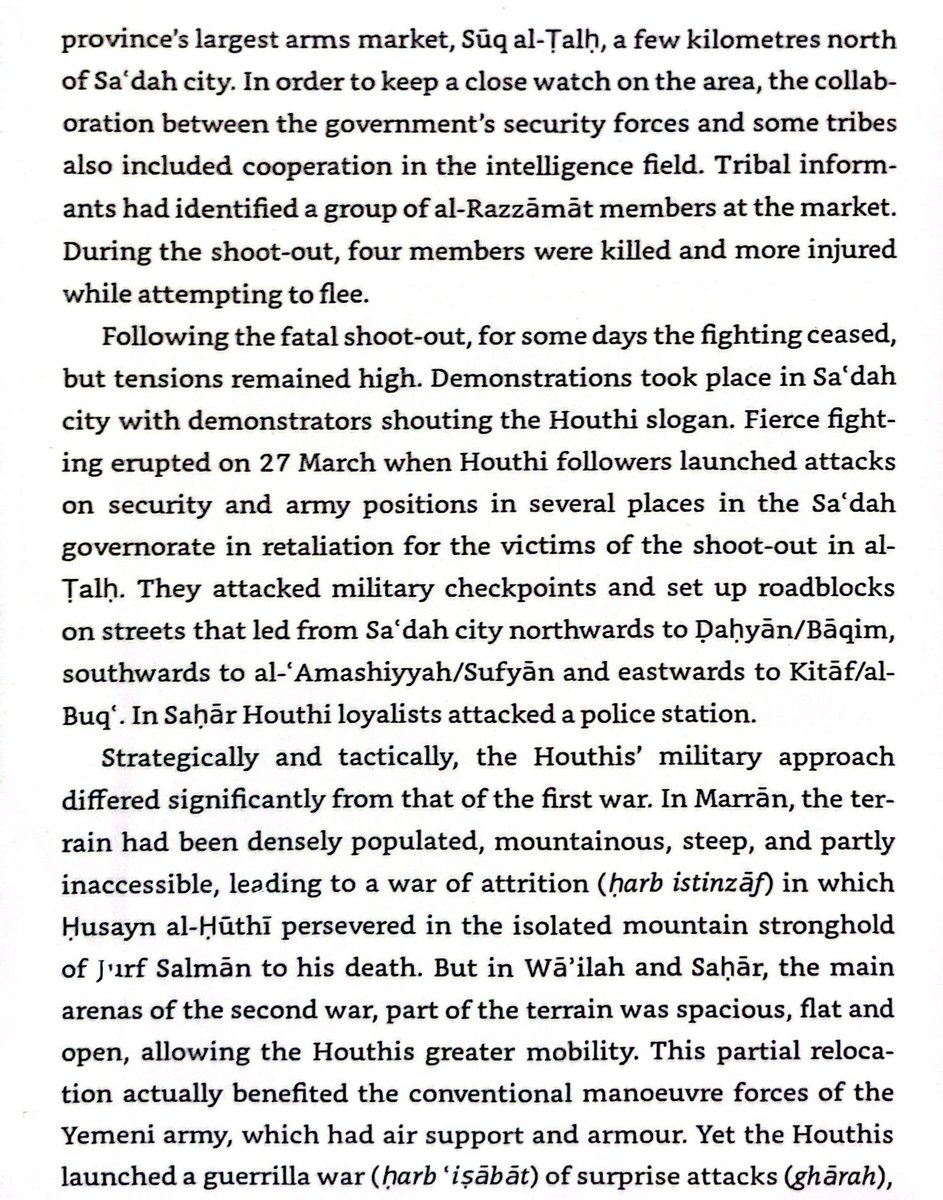

Second Sa'dah War drew more clans into the government-Houthi conflict. Clans which had become wealthy from supporting Republicans in 1962-1970 civil war were backed by government, but faced hostility from poorer clans who wanted more wealth & influence, & decided to back Houthis.






Sudan is seen as a brutal place even by Yemeni standards. During Second Sa'dah War, government's use of Hashid tribesmen against Houthis led many Sa'dah locals to see the war as a tribal feud, and rallied behind the Houthis.




Second Sa'dah War ended in April 2005 with the surrender of two Houthi strongholds. However, Houthi leadership escaped the government's cordons and sweeps. 

Third Sa'dah War lasted from November 2005 to February 2006. More of the province was involved, and masses of tribesmen joined Houthi ranks to fight against their local rivals as well as government troops.








Third Sa'dah War ended with a truce. Funds were given to pro-government tribes for infrastructure construction, Zaydi schools reopened, prisoners were amnestied, the Houthi slogan was to not be chanted at mosques, & Houthis endorsed the constitution.





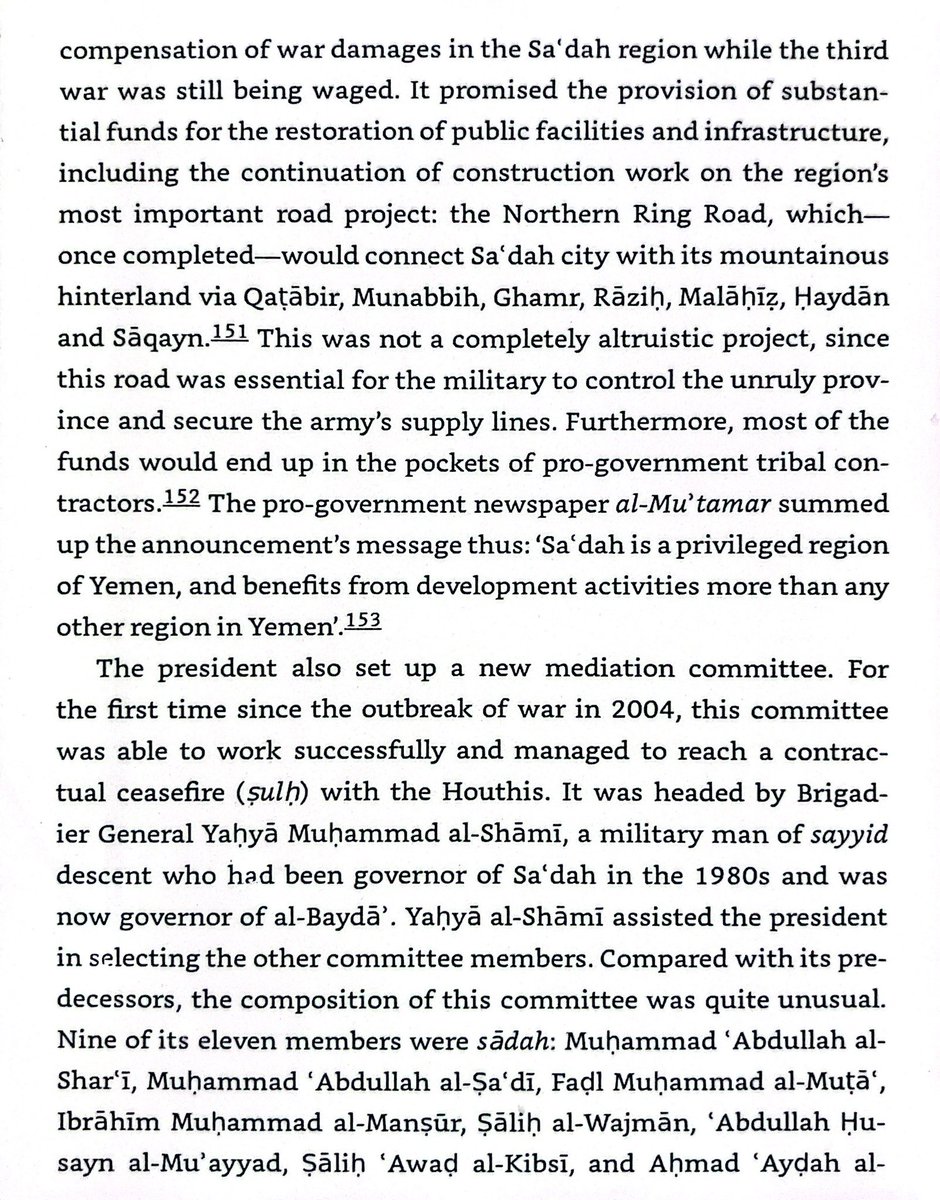


Salih won the 2006 election in a landslide, even in Sa'dah. Houthis refused to participate in the election, so turnout was low in Sa'dah.






By the end of the Third Sa'dah War; too much blood had been shed, too many weapons distributed, and too many men mobilized for peace to have been attainable. The conflict had heated far beyond the norms of tribal conflicts.






Iran didn't materially support the Houthis until 2011, but Salih insisted to Saudis and USians from the beginning that the unrest in Sa'dah was an Iranian op. Neither believed him, but USians gave a few hundred million $ worth of arms to him in hopes he'd resolve the issue.








Iran only began paying serious attention to Yemen after the Saudis intervened in 2009. Limited material support for the Houthis began in 2011, and its support for the Houthis expanded beginning in 2014.




Libya, always eager to undermine its reactionary enemy in Saudi Arabia, threw a few score million dollars at northern Yemeni sheikhs to stir up trouble on the southern border in 2006. The money was squandered, but did cause some tribal feuds.




https://x.com/peter_nimitz/status/1282553847450202112?s=46




Fourth Sa'dah War forced the government to recruit Sunni militants to bolster the faltering army. Recruitment of troops from local tribes weakened authority of the sheikhs, leading several to break with the government.




One Houthi threatened Jews in a suburb of Sa'dah. The Jews fled to Sa'dah, then Sana'a. USA demanded that Yemen protect its Jews, & EU threatened to put Houthis on terror list. Government seized opportunity to launch Fourth Sa'dah War nine days later with international backing.




Yemeni government deployed 15,000 troops to destroy the Houthis in February 2017, with 30,000 deployed by April. The Houthis had considerably fewer men, but had been preparing since the last war.








Dahyan had a large sayyid population & strongly supported the Houthis. Government troops & auxiliaries assaulted it during the Fourth Sa'dah War from February to June 2007. The Houthis offered fanatical resistance and held on to the city.






Most of Sa'dah fell under Houthi control in early part of the Fourth Sa'dah War, humiliating the government. 

Failure of the military and Hashid auxiliaries in the Fourth Sa'dah War led to government drawing on support from Salafi & Shafi'i thinkers & their followers. The conflict became more explicitly sectarian.








Qatar's efforts at mediating the Sa'dah Conflict failed. After months of skirmishes, the Fifth Sa'dah War exploded in May 2008 and lasted until July. Salih was also distracted by the rekindling of the conflict in southern Yemen. Fighting spread from Sa'dah to al-Jawf province.








In Fifth Sa'dah War, Houthis sent a few hundred men to Bani Hushaysh - a suburb of Sana'a. Republican Guard was deployed to clear them out, but was unsuccessful.






Al-Jawf is the poorest part of Yemen. Its people are known as savages (one tribe's name is literally "The Raiders"), but their sheikhs were easily bought off by the government prior to the rise of the Houthis.






Fifth Sa'dah War ended in July 2008. Yemeni government's domestic & international positions were weak, so Salih unilaterally declared ceasefire - allowing him to withdraw certain military units from Sa'dah, maneuver political rival into weaker position, & cut Saudi influence.






Houthis used the ceasefire between the Fifth and Sixth Sa'dah Wars to annex additional tribal territories. Tribal customary law had been largely superseded by that point.




During the interim between the Fifth and Sixth Sa'dah Wars, Houthis would show up to mosques in al-Jawf, shout their slogan, then start a fight.




Sixth Sa'dah War lasted from August 2009 to February 2010. Government launched a brutal punitive campaign, but Houthis were so strong that government was pushed back. Saudi intervention in November 2009 was a heavy burden on Houthis and relieved Yemeni government.








Saudi aerial bombardments and cross-border shellings of Houthis had been prepared for some time before Sixth Sa'dah War. Houthis still managed to invade Saudi Arabia & hold parts of it for a month - apparently with sympathy of local Saudi Zaydis.




By late 2009, Houthis were purchasing weapons from China, shipping them to Yemen, then smuggling them across government-controlled territory to their bases in the north.




Faris Mana, arms procurer for the government, smuggler for the Houthis, and politician; finally got in trouble for selling weapons to al-Shabaab in Somalia in April 2010. He later became the Houthi governor of Sa'dah in 2011. 

End of Sixth Sa'dah War in February 2010 left government only in control of Sa'dah City in Sa'dah. Anti-Houthis sheikhs formed the Tribal Alliance which fought until its collapse in March 2011. The Tribal Alliance hollowed itself out in its attempt to be a mirror of the Houthis.








Houthis took advantage of the chaos in Sana'a during Arab Spring of 2011. They crushed their remaining tribal opponents, then swept bloodlessly into Sa'dah City on 24 March 2011. All of Sa'dah was theirs.






Houthis continued to advance from 2011-2014, fighting various tribal and Salafist groups. Salih, in a cynical effort at holding power, aided their expansion by allowing arms smuggling to them in an effort to undermine his internal enemies & make himself indispensable.




• • •
Missing some Tweet in this thread? You can try to
force a refresh










